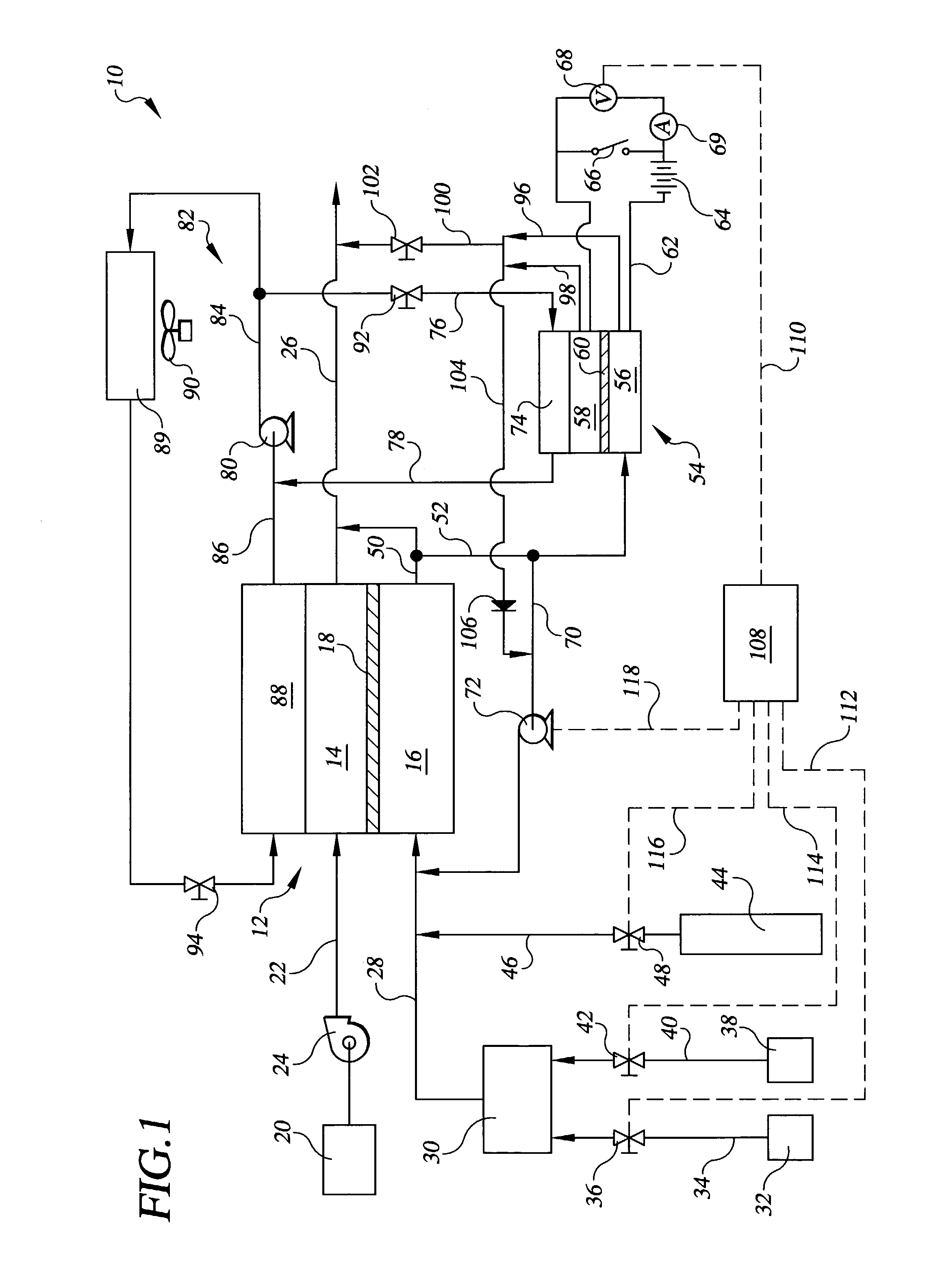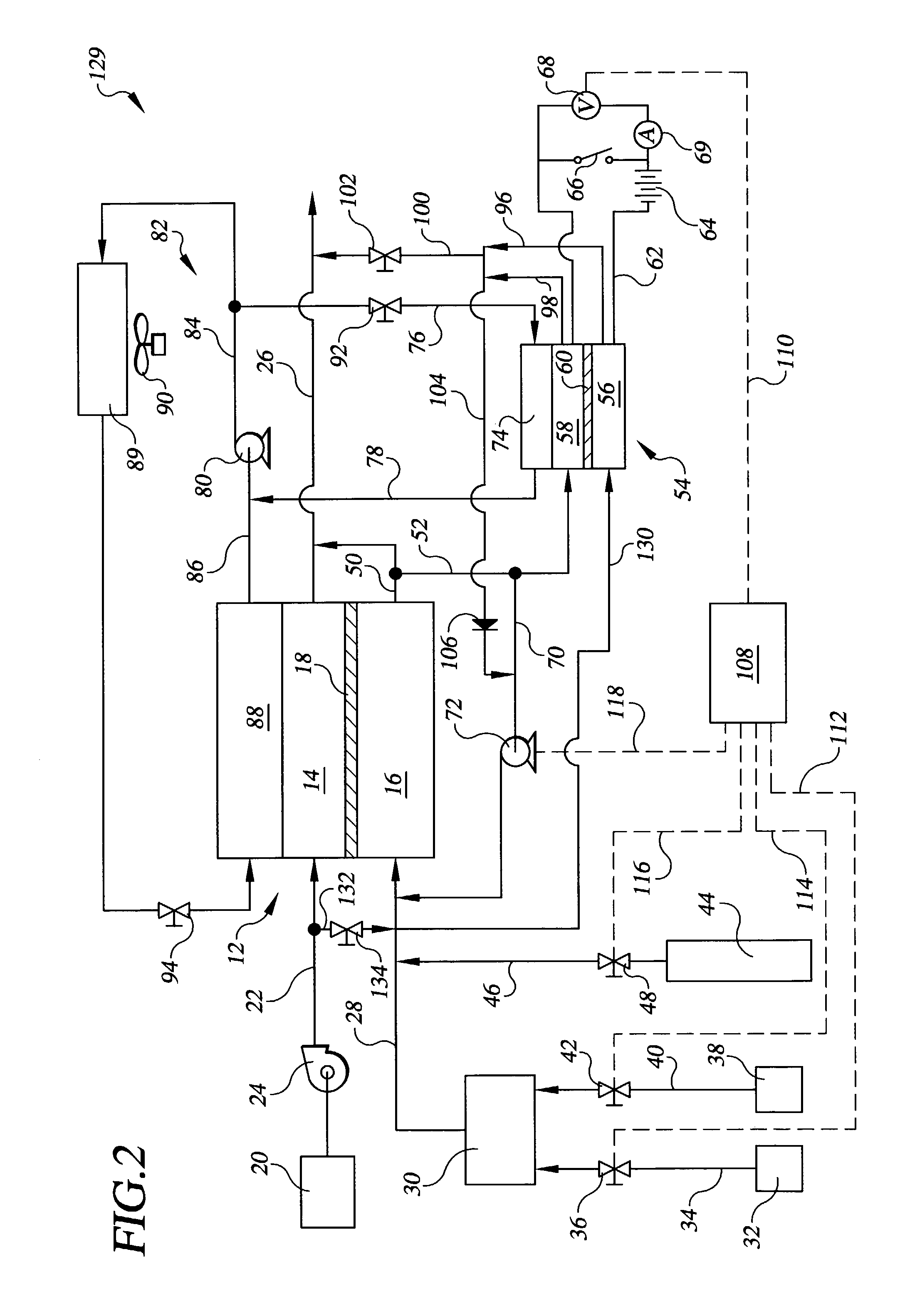Fuel cell power plant having a fuel concentration sensor cell
a fuel cell and sensor cell technology, applied in the direction of fuel cells, fuel cells, cell components, etc., can solve the problems of increasing the cost and volume of the fuel cell power plant, irreversible damage to the insufficient amount of hydrogen fuel within the fuel cell of the plant, so as to achieve accurate measurement of the hydrogen concentration difference and increase the recycling of fuel
- Summary
- Abstract
- Description
- Claims
- Application Information
AI Technical Summary
Benefits of technology
Problems solved by technology
Method used
Image
Examples
Embodiment Construction
[0018]Referring to the drawings in detail, a fuel cell power plant having a fuel concentration sensor cell constructed in accordance with the present invention is shown in FIG. 1, and is generally designated by the reference numeral 10. The power plant 10 includes at least one fuel cell 12 having a cathode flow field 14 and an anode flow field 16 disposed on opposed sides of a membrane electrode assembly 18 in a manner well known in the art. An oxidant source 20 supplies an oxidant such as air through an oxidant inlet 22 to the cathode flow field 14. The oxidant inlet 22 may have a blower 24 to increase the pressure of the oxidant. The oxidant passes out of the cathode flow field 14 and fuel cell 12 through an oxidant exhaust 26 to be vented out of the fuel cell 12. A hydrogen rich reducing fluid fuel is supplied to the anode flow field 16 as a fuel inlet stream passing through a fuel inlet 28. The fuel may be produced by a fuel processor of fuel processing system 30 well known in t...
PUM
| Property | Measurement | Unit |
|---|---|---|
| electrical current | aaaaa | aaaaa |
| concentration | aaaaa | aaaaa |
| electrical communication | aaaaa | aaaaa |
Abstract
Description
Claims
Application Information
 Login to View More
Login to View More - R&D
- Intellectual Property
- Life Sciences
- Materials
- Tech Scout
- Unparalleled Data Quality
- Higher Quality Content
- 60% Fewer Hallucinations
Browse by: Latest US Patents, China's latest patents, Technical Efficacy Thesaurus, Application Domain, Technology Topic, Popular Technical Reports.
© 2025 PatSnap. All rights reserved.Legal|Privacy policy|Modern Slavery Act Transparency Statement|Sitemap|About US| Contact US: help@patsnap.com



